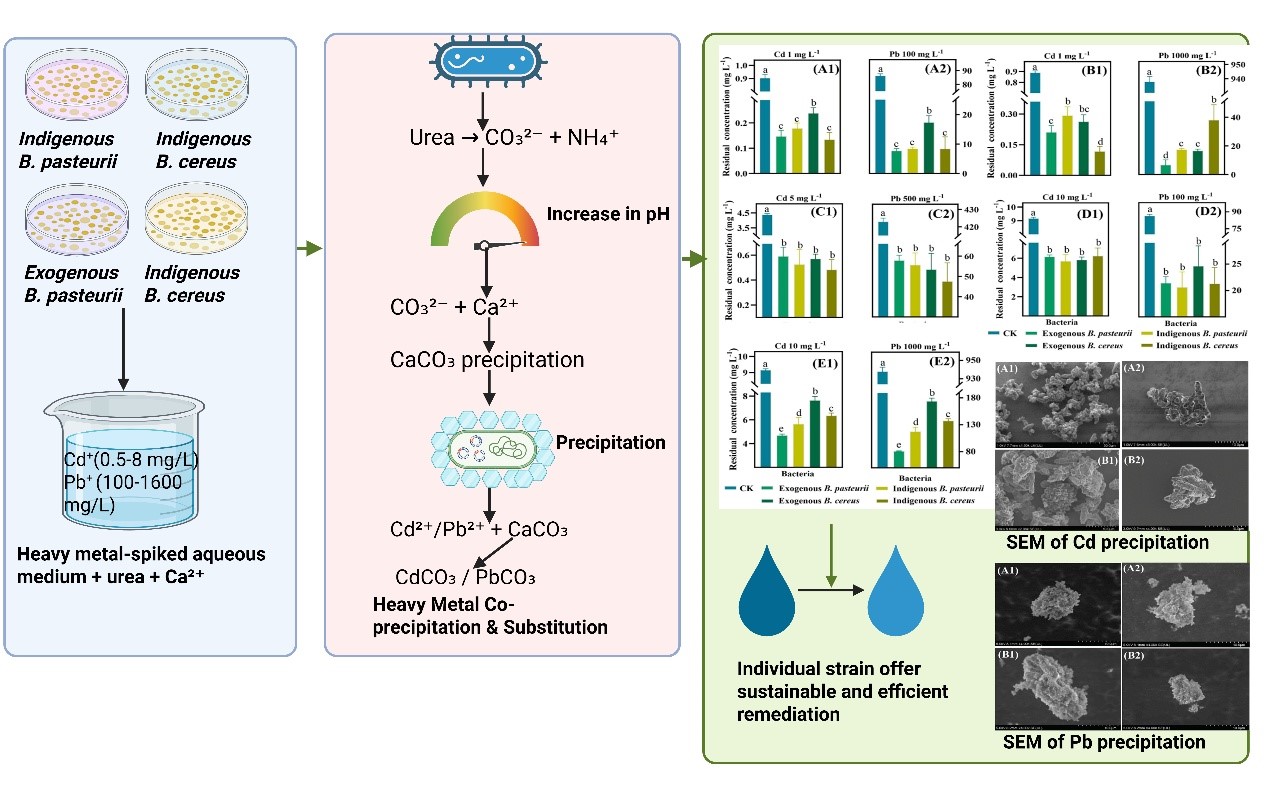With the continuous expansion of industrial and agricultural activities, the contamination of water bodies and soils by heavy metals such as cadmium (Cd) and lead (Pb) has become a severe global environmental challenge. These toxic metals are not only persistent in the environment and highly biotoxic but also readily bioaccumulate through the food chain, posing threats to ecosystem stability and the safety of agricultural products. Among various green and sustainable in-situ bioremediation technologies, Microbially Induced Carbonate Precipitation (MICP) has attracted attention due to its environmental friendliness, relatively low cost, and potential for long-term stability.
In actual contaminated sites, heavy metals like Cd and Pb often coexist, potentially triggering complex interactions such as synergy, antagonism, or competitive inhibition. These interactions affect microbial activity, mineralization efficiency, and ultimately the stability of remediation results.
In a new study developed by the South China Botanical Garden of the Chinese Academy of Sciences, researchers successfully isolated two indigenous mineralizing bacterial strains, Bacillus pasteurii and Bacillus cereus, from typical contaminated soils in northern Guangdong. They then conducted a systematic comparison with commercial strains. The results showed that under low-concentration contamination conditions (Cd: 0.5-4.0 mg/L, Pb: 100-200 mg/L), both indigenous strains achieved an immobilization efficiency of over 98% for both Cd and Pb, demonstrating high performance. Even under higher stress conditions (e.g., Cd at 8 mg/L), the indigenous B. pasteurii maintained an immobilization efficiency of 96%.
In Cd-Pb co-contaminated environments, the researchers observed competitive inhibition between the two metals. Due to its stronger binding affinity, Pb often dominated the immobilization process. The mineralizing bacteria induced the formation of carbonate mineral precipitates enriched with Cd or Pb, which is the key mechanism for heavy metal immobilization. Compared with exogenous commercial strains, the strains isolated from contaminated sites exhibited greater environmental adaptability and superior heavy metal immobilization capacity. They initiated the mineralization process more rapidly and formed more stable mineral structures, providing high-quality "seed" resources for in-situ bioremediation.
This study not only deepens the understanding of the mechanisms underlying the microbial mineralization process but also provides an efficient, low-cost, and environmentally friendly solution for the practical remediation of heavy metal-contaminated water and soil, the researchers noted.
Additionally, this work further confirms that indigenous mineralizing bacteria isolated from contaminated soils demonstrate effective remediation performance in actual Cd-Pb co-contaminated farmland soils.
The study was recently published in the Journal of Hazardous Materials, and it was supported by the National Natural Science Foundation of China and the Science and Technology Program of Guangdong Province.

Mineralizing bacteria "capture" heavy metals in water through biomineralization. (Image by ZHUANG Ping et al)






